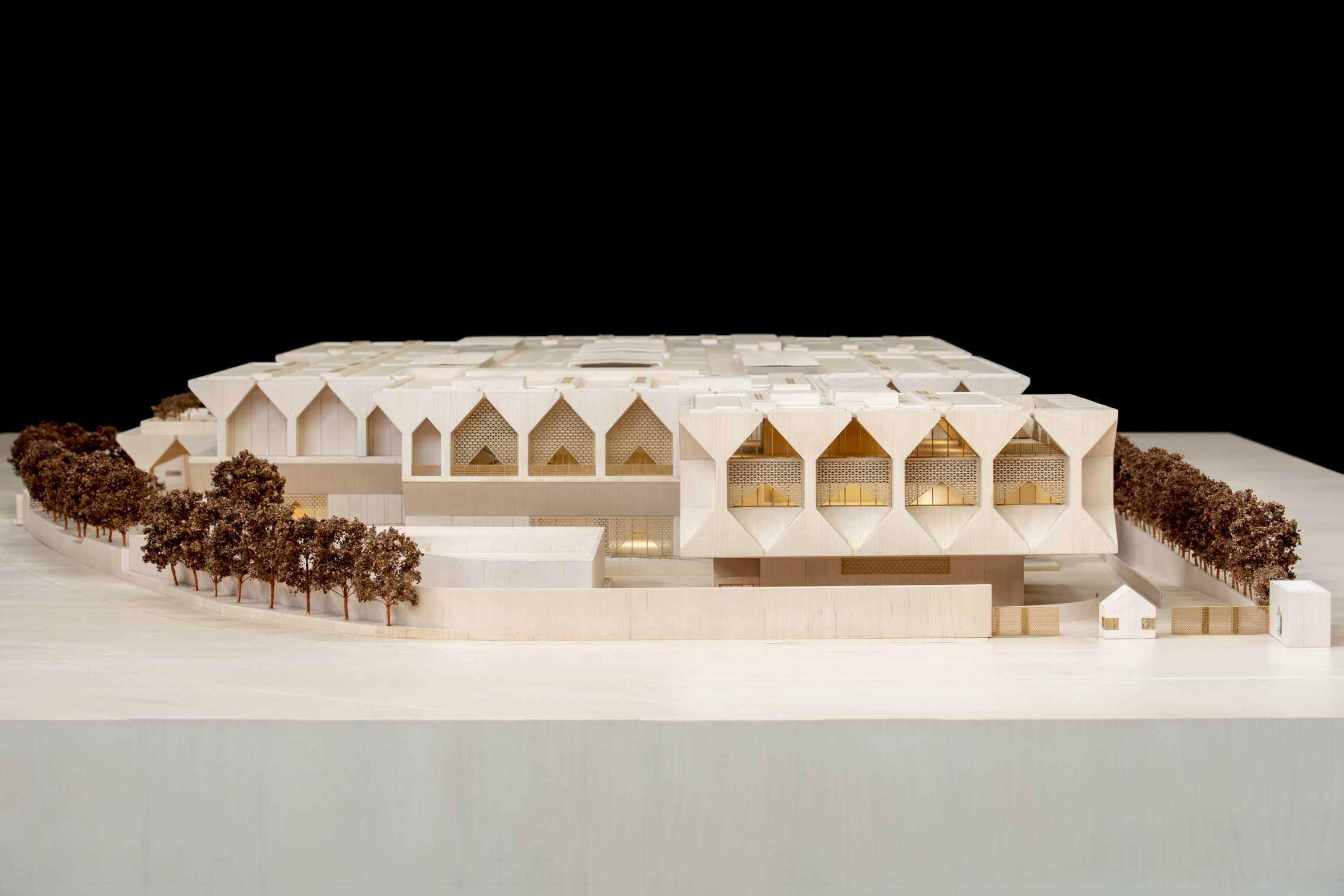
Kiran Nadar Museum of Art (KNMA) unveiled an architectural model of its new building
Kiran Nadar Museum of Art (KNMA) unveiled the architectural model of its forthcoming new building in Delhi, set to become India’s largest cultural center upon its completion in 2026. The design of the building is a collaboration between renowned Ghanaian-British architect David Adjaye and local architect of record S Ghosh & Associates. The unveiling of the model coincided with the breaking ground ceremony at the museum’s site in New Delhi. The architectural model will be available for public viewing at KNMA Saket from May 19 to 28, 2023.
The exhibition surrounding the architectural model showcases works from KNMA’s collection by prominent artists such as Tyeb Mehta (1925-2009), Zarina (1937-2020), and Nasreen Mohamedi (1937-1990). These artworks span over a century and are accompanied by a film titled “Touch Air” (2023) created by contemporary filmmaker Amit Dutta.
Established in 2010 by Kiran Nadar, a prominent art collector in India, KNMA is a pioneering private museum that exhibits modern and contemporary works from India and the subcontinent. Currently, it has branches in New Delhi and Noida. The new location, spanning over 100,000 square meters, will be situated on the National Highway (NH8) near the Indira Gandhi International Airport.
With a collection of over 10,000 modern and contemporary works, KNMA draws inspiration from the region’s rich cultural history. The new museum aims to be an international cultural destination for visual arts, music, dance, and theater. It will host changing exhibitions, permanent displays, performances, and enable a larger portion of the collection to be showcased simultaneously.
The exhibition at KNMA explores the theme of “Mnemonic” through various mediums, including images, text, architecture (model), and film. By coexisting, these elements amplify the relationship between the museum and memory, suspending the movement of time between the past and the present. The exhibition also alludes to the theme of Partition, referring to the division of India and Pakistan in 1947 and the subsequent ruptured sense of place and being.
Tyeb Mehta’s artwork reflects the use of diagonal lines that symbolize both fragmentation and healing while expressing unspoken pain and historical burdens. Zarina’s poetic reflections on home, memory, and displacement resonate with the theme of separation and belonging, particularly from a feminine perspective. Amit Dutta’s film incorporates Nasreen Mohamedi’s personal notes and her unique artistic vision, drawing upon the aesthetics of minimalism to transcend physical borders and explore the spaces between the known and the unknown.
Kiran Nadar expressed her excitement about the new building, stating that it will be a world-class cultural center and a cultural powerhouse accessible to all. She emphasized the museum’s role in giving back to society, preserving cultural treasures, and nurturing young creative practitioners and thinkers while bridging the gap between art and the public.
David Adjaye, the architect, highlighted the significance of the museum’s location and its design vision. He sees KNMA as a catalyst for the rise of contemporary Indian art, offering a new cultural experience for both the people of India and the global arts community.
“The specific location in Delhi influences the form, rhythm, and landscape of the new building, positioning it as a dynamic and integral part of the city’s cultural fabric,” he says.
When: May 19 – May 28
Where: Kiran Nadar Museum of Arts, Saket
Rival leagues trigger players’ suspensions and a legal battle in Indian golf, for now
Former Delhi CM Kejriwal criticises Centre, Delhi govt over worsening air pollution, alleges AQI manipulation
Delhi Police raids Nangloi unit producing fake engine oil, seizes over Rs 1 crore worth…
Mukesh Sharma reimagines digital components as living matter in his solo exhibition ‘Decoding Digital DNA’
Nine accused were arrested in coordinated raids as police uncovered organised networks supplying mule bank…
Nearly 1.57 lakh PUC challans issued in two months as Delhi steps up GRAP enforcement…